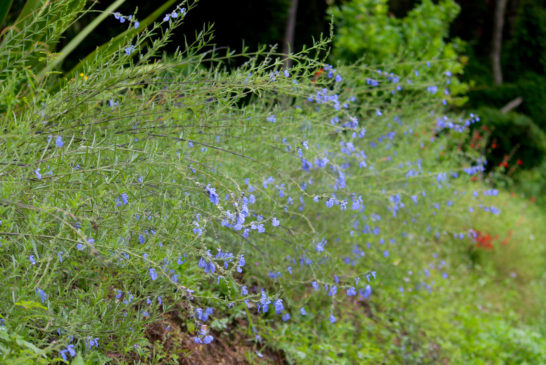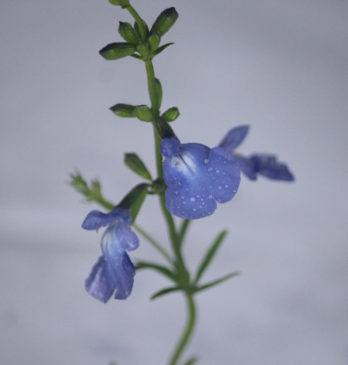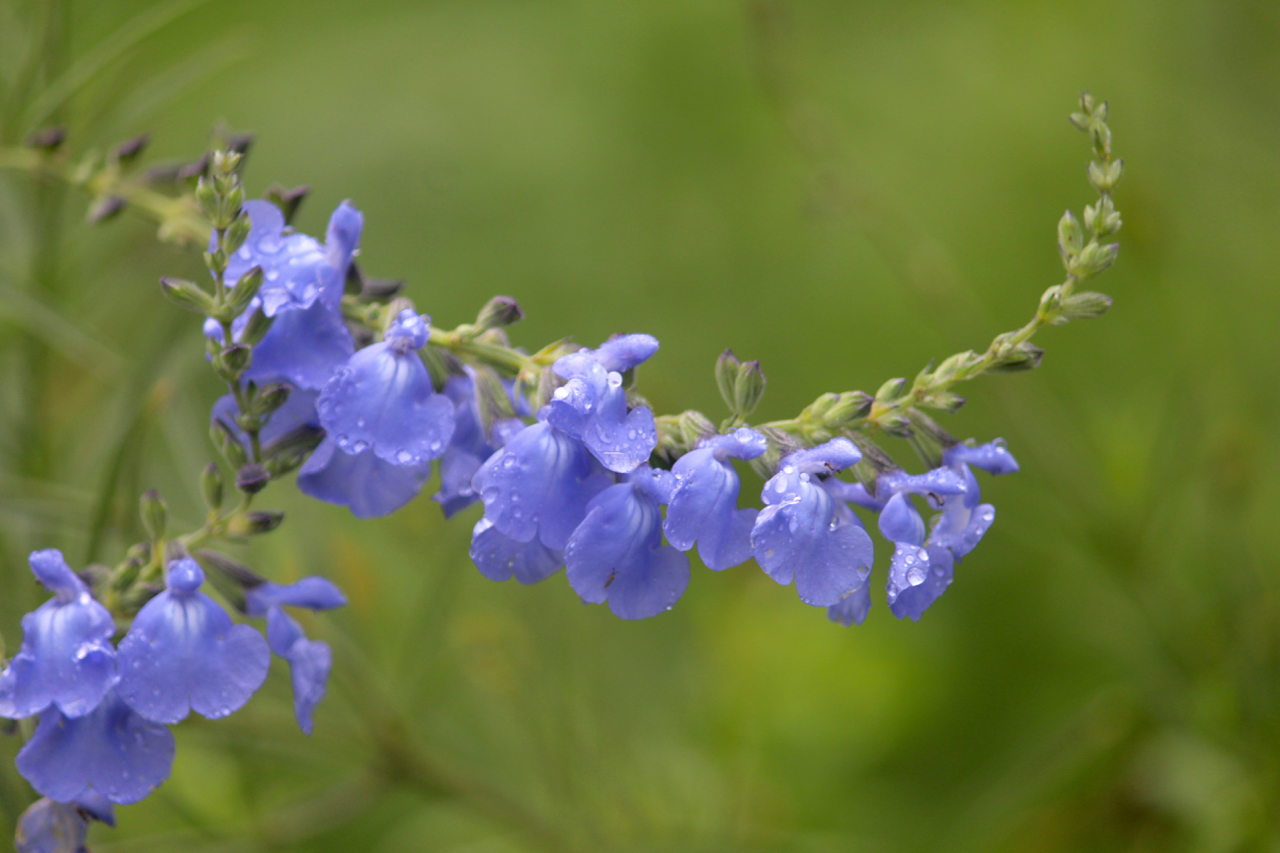 Salvia azurea is one of the few salvias that die down in Winter but still do well in a subtropical garden. As its common name ‘Prairie Sage’ indicates, it is adapted to the cold Winters of central USA. In Autumn it has a lovely display of pale blue flowers on airy stems, which slowly but surely arch over to the ground as the weeks pass.
Salvia azurea is one of the few salvias that die down in Winter but still do well in a subtropical garden. As its common name ‘Prairie Sage’ indicates, it is adapted to the cold Winters of central USA. In Autumn it has a lovely display of pale blue flowers on airy stems, which slowly but surely arch over to the ground as the weeks pass.
The growth habit is unusual for a Salvia in a few ways. The leaves are linear like tarragon, and in sets. Leader leaves are around 50 mm long and 4 mm wide with a few serrations towards the tip. There is practically no petiole, and a pair of smaller leaves sit in each leader axis. The many wiry stems grow vertically from the root stock from Spring. In my plants the upper side of the (square) stem is purple, in contrast with the grass green of the rest of the plant.
 Flowers are borne in terminal spikes to around 250 mm long that last for months with progressive flowering. The flowers have a prominent petticoat lower lip around 20 mm wide, and a small upper lip. The pale blue of the lower lip fades to white in the throat.
Flowers are borne in terminal spikes to around 250 mm long that last for months with progressive flowering. The flowers have a prominent petticoat lower lip around 20 mm wide, and a small upper lip. The pale blue of the lower lip fades to white in the throat.
Even in a warm climate plants die down to rootstock in the Winter and the previous year’s stems will be no further use, so it’s best to cut them all off to ground level. I grow mine with S. sinaloensis, a ground cover which keeps the place during Winter. It has complementary dark blue flowers at the same time, and they don’t seem to get in each other’s way.
Azurea looks great as a linear planting where it can flop across a path or down a bank. It needs as much sun as you can give it, and has been drought tolerant at the top of an exposed bank, although of course does best with rescue watering. I like to let it do its thing and flop over a bank, but Betsy Clebsch suggests some strategies for keeping it upright, such as planting with shrubs, or along a fence.
S. azurea grows easily from Spring cuttings but also from seed. In view of its native habitat of icy winters I compared storing seed in the fridge and freezer, but got no difference in germination with a Spring sowing.

